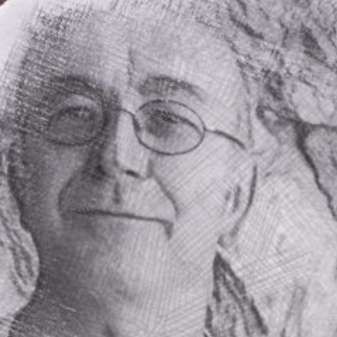The contention that black and white are not colours felt doubtful upon seeing the customary RSNO white tie and black tails reversed; the truly colourful array of dresses offsetting white tuxedos allowed one to see, more easily than usual, the gender balance of the RSNO – which, in this Valentine’s concert, seemed about 50–50.
Opening a Valentine’s concert with a portrait of a heartless lothario is a bold piece of programming – in which regard, top marks to Robin Versteeg for slipping the terms “rush of blood” and “thrusting” into the programme notes. Richard Strauss’ Don Juan is, however, a great opener from a master dramatist. The musicians, under RSNO Assistant Conductor Christian Kluxen, responded well to the work’s many seductive harmonies and equally to the more dramatic music portraying the hero, defiant in downfall. Guest Principal Oboe Dan Bates was especially lyrical in an extended solo passage. Often cited as a very difficult piece, this work did not seem to tax the RSNO one jot.
Pianist Olga Kern’s CV opens with mention of her direct family links to Tchaikovsky and Rachmaninov. This makes her a natural choice for the latter’s Piano Concerto no. 2 in C minor. Kern seemed to take this piece’s virtuosity in her stride, including the passages where the soloist’s many notes roil under dense orchestral accompaniment. In quieter moments, her sensitive phrasing was very affecting. Although the lovely theme of the central Andante sostenuto is regarded by many as the work’s pivotal “romantic” moment, I find the principal theme of the closing Allegro scherzando more touching. At that particular moment, the music is anything but allegro, and the theme soars unendingly as though barlines and cadences didn’t exist. There’s nothing like the arrival of a brisk fugue to convert the spirit of a conductor’s brushstrokes from Hokusai to Euclid. Kluxen’s sweeping gestures which guided the soaring phrases in this movement's outer sections were here replaced by necessarily more urgent indications of the beat.
Touched by the warm audience response to the concerto, Kern offered as an encore Rachmaninov’s Moment Musical in E minor, Op. 16 no. 4. Beginning with a waspish left-hand figure, the piece soon becomes romantically rhapsodic. Had this not been a tight, five-item programme I suspect, based on warm audience response, that further encores might have followed.
RSNO Leader Maya Iwabuchi featured in the Romance from Shostakovich’s The Gadfly Suite, which was written for the 1955 film of the same name (based on Ethel Lilian Voynich’s novel). I found the contrasting middle section of this work more appealing than the romantic theme which, while beautifully played, felt like pastiche. I could admire the craft of a cinema composer at work but much prefer the dark, tangled beauty with which Shostakovich is more usually associated.
Much more vigorous than I suspected was Tchaikovsky’s fantasy overture Romeo and Juliet. Of course, I’m familiar with the theme which, despite decades of being harnessed to comedic depictions of romantic rapture, remains remarkably moving, particularly in its oddly scored first appearance for cor anglais and violas. I was less familiar with the work’s hymn-like opening and its punchy and syncopated passages. Already spotted during the Rachmaninov in some of the most delicate cymbal-work of all time, Associate Principal Percussionist John Poulter clinched much of the diction in the orchestra’s many animated moments. Cymbals clashed, or clutched to his body, he struck me as typifying the self-reliance and courage essential to orchestral percussion playing. However, his crowning moment was yet to come.
The inclusion of Ravel’s Boléro in a Valentine’s programme may seem puzzling, but it’s simply a very sexy piece. This fun person’s guide to the orchestra was superbly paced by the RSNO. It was captivating to hear the contrasting character each instrument brought to what was essentially the same material. The ever-stylish David Hubbard made the bassoon sound like the natural choice for jazz lovers; Principal E flat Clarinet Joseph Pacewicz sounded amazingly unhurried despite the quasi-military beat behind just behind him; the violins, their patient pizzicato over, abandoned their ukulele-style hold and, shouldering their weapons, added incredible warmth to the proceedings; RSNO trombones were simply swaggering. At the work’s peak, the percussion section, huddled together, resembled a many-limbed creature involved in a slightly macabre dance. The uncontested hero of this piece was, of course, the omnipresent side-drummer, John Poulter. Across the work’s fifteen-minute duration, I noted the arc described by his sticks grow from five degrees to over a hundred. By this time, the light was catching the much more raised sticks, as though to alert us to the recruitment of a second side-drummer now necessary to match the huge orchestral sound. I thoroughly enjoyed this performance. The audience erupted within a millisecond of the final notes.


